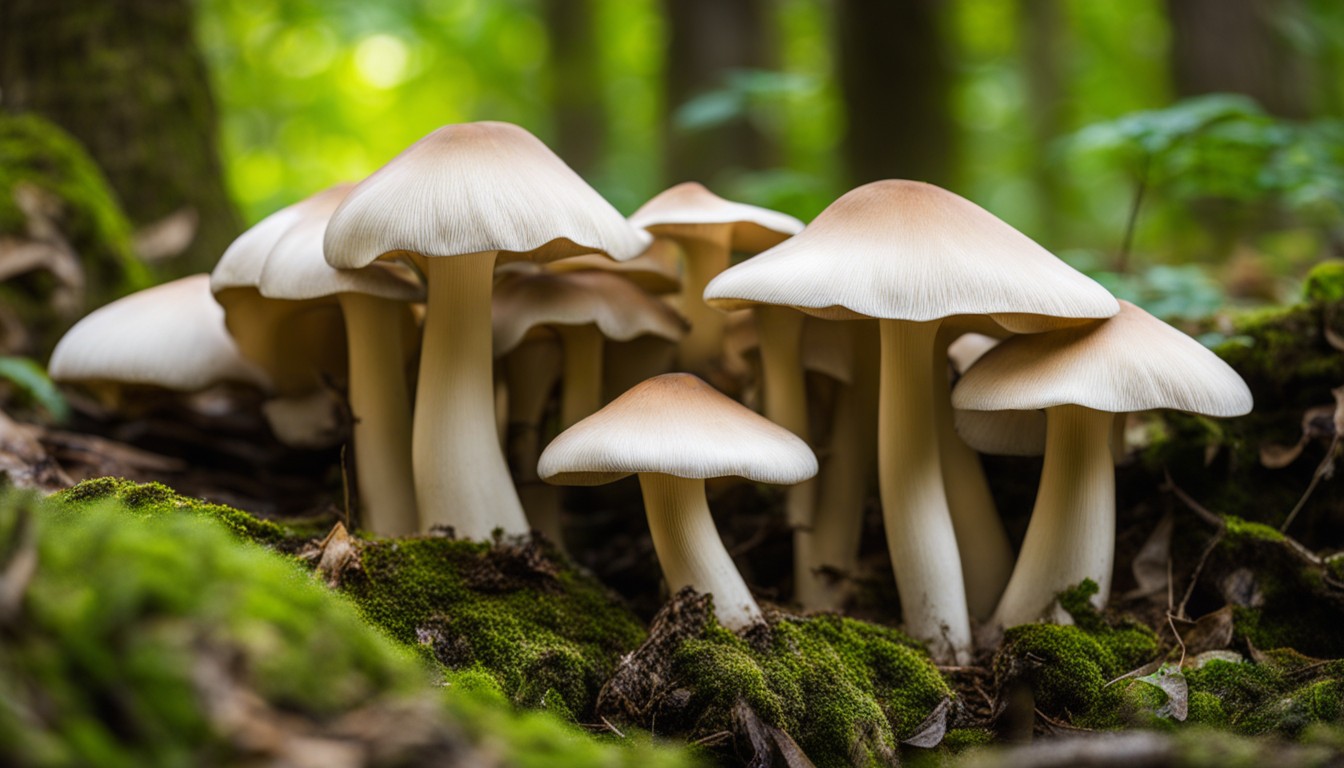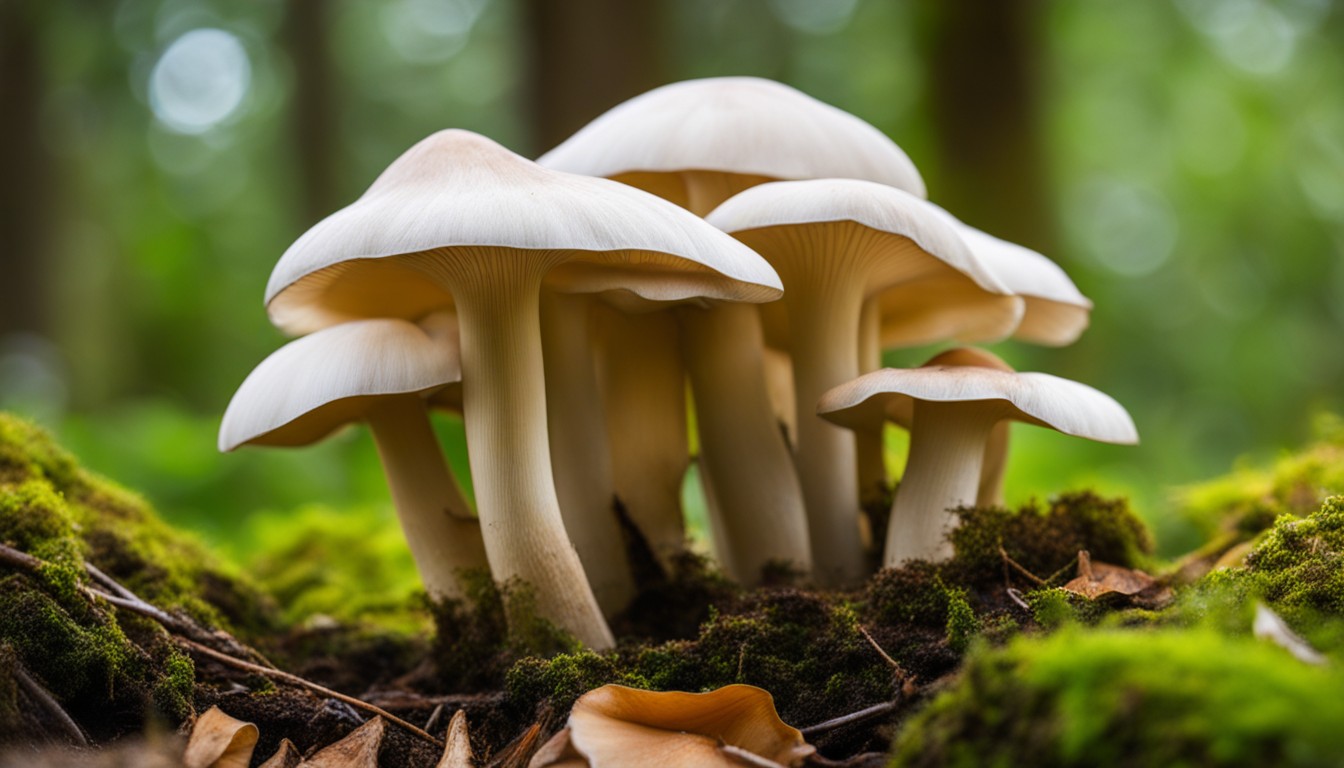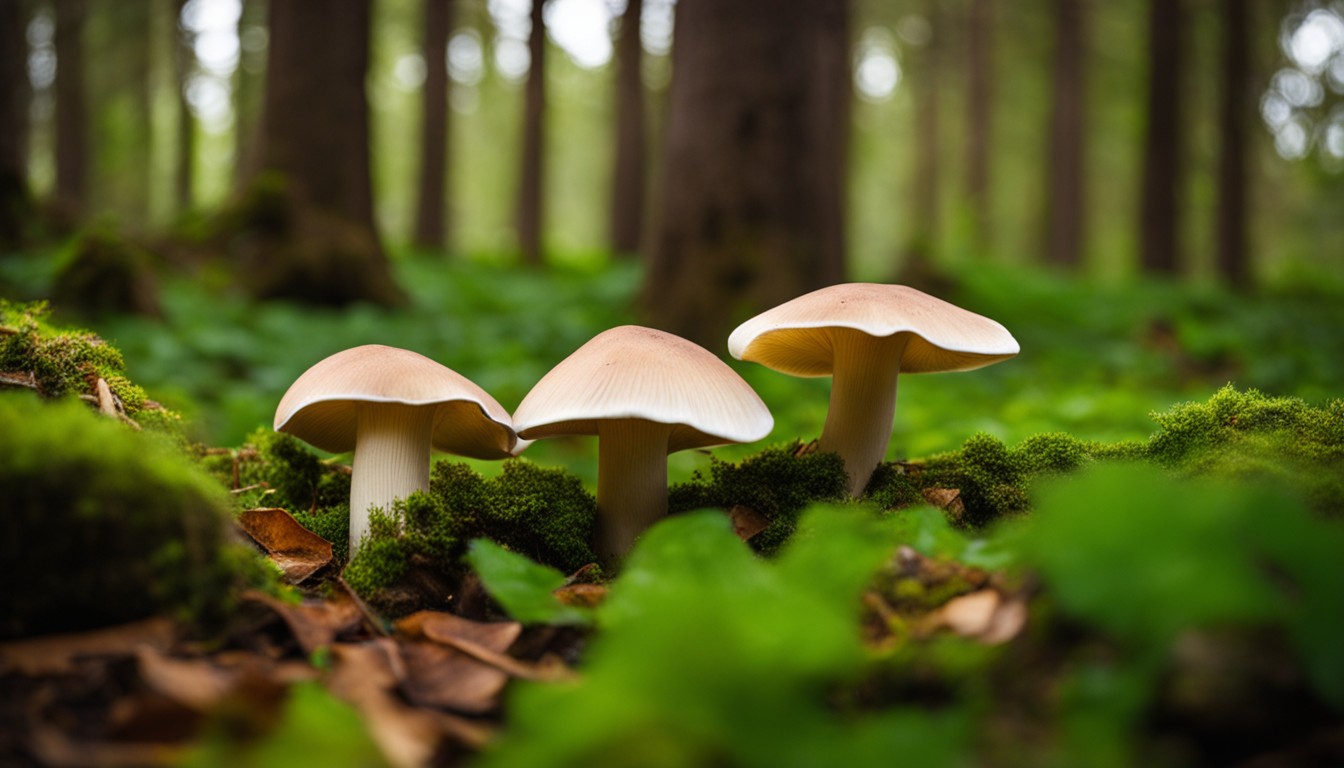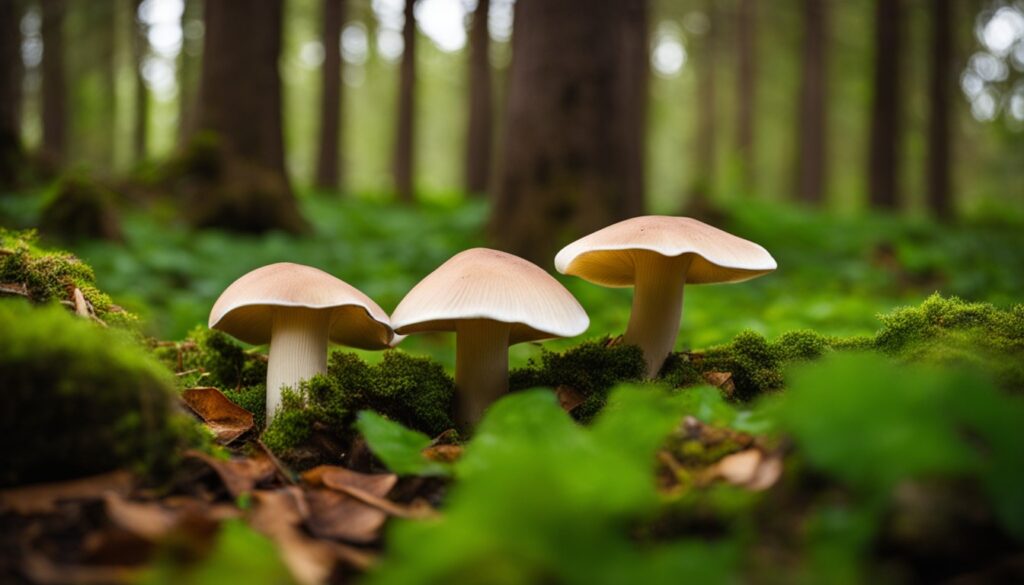Explore the fascinating world of mushrooms in western North Carolina, where a diverse array of species thrive in the region’s unique ecosystems. From the ancient and medicinal reishi mushroom to the stunning amanita muscaria, these natural wonders captivate both nature enthusiasts and mycologists alike. Join us as we delve into the captivating world of mushrooms, revealing their ecological importance, cultural significance, and the best spots to encounter these enchanting fungi in western North Carolina. Whether you’re a seasoned mycophile or a curious beginner, this blog post will provide you with a deeper understanding and appreciation for the mushrooms that call this region home. So put on your hiking boots, grab your guidebook, and get ready to embark on a fungi-filled adventure through the stunning landscapes of western North Carolina.
The Ecological Importance of Mushrooms
Western North Carolina’s ecology sees significant enrichment by varied mushroom varieties, translating into an intricately interwoven fabric of forest life. These fungi operate as silent stewards of our landscapes, yet their importance remains markedly underappreciated.
Mushrooms in Western North Carolina boost ecological vibrancy by facilitating nutrient cycling, decomposition, and sustaining diverse life, from plants and animals to microbes.
These unnoticed organisms foster a vibrant ecosystem by their contributions, enhancing the biodiversity and sustainability of Western North Carolina. They not only participate in nutrient cycling and decomposition but also sustain the plant, animal, and microbe populations in these ecosystems.
Role of Mushrooms in Forest Ecosystems
Mushrooms constitute a key component of Western North Carolina’s forest ecosystems, contributing a myriad of eco-benefits, boosting sustainability, and shaping the woodland environment.
- Promotion of biodiversity: By decomposing dead organic matter, mushrooms make way for new life forms and enhance species diversity.
- Nutrient cycling: Mushrooms break down complex organic compounds into simpler forms that trees and other plants can absorb, improving soil health and productivity.
- Symbiotic relationships: Certain mushrooms form mutualistic relationships with trees, aiding their growth, survival, and resistance to diseases.
- Food source: Numerous woodland creatures, from insects to mammals, rely on mushrooms as a primary food resource.
Mycorrhizal Relationships: How Mushrooms Benefit Plants
In Western North Carolina, the intricate dance of beneficial connections between mushrooms and plants is exemplified by mycorrhizal relationships. These vibrant networks underline the ecological importance of fungi, significantly contributing to the health and resilience of the area’s diverse plant life.
- Mushrooms supply plants with vital nutrients through mycorrhizal connections.
- Plants, in turn, offer mushrooms carbohydrates they manufacture during photosynthesis.
- Mycorrhizal mushrooms improve soil structure, boosting aeration and water retention.
- Mycorrhizae aid in plant disease resistance.
- Certain types of mycorrhizal mushrooms in Western North Carolina can even enhance a plant’s resistance to heavy metals.
Decomposition and Nutrient Cycling
In Western North Carolina’s forest floors, mushrooms rule the roost as the primary architects of decomposition and nutrient cycling. Their saprophytic action drives the breakdown of organic matter, enriching soils with vital nutrients.
- Forests lively with mushrooms, busy decomposing organic material.
- Mushrooms serving as primary recyclers, transforming matter into nutrient-rich soil.
- Healthy soils supporting vibrant ecosystems, thanks to the behind-the-scenes work of saprophytic mushrooms.
Mushrooms as Habitats and Food Sources
In Western North Carolina, diverse mushroom species provide critical habitat and feeding grounds for a myriad of wildlife. They create ecological niches, acting as food sources and offering shelter to a plethora of organisms.
- Many small insects and invertebrates use mushrooms as breeding grounds.
- Different species of birds, rodents, and deer in Western North Carolina consume mushrooms as a part of their diet.
- The gills under mushroom caps make an ideal hiding place for small wildlife.
- Certain mushroom species provide nectar and attract pollinators.
- Decomposed mushrooms act as an organic fertilizer, enhancing soil quality and promoting plant growth.
Common Mushroom Species in Western North Carolina

In Western North Carolina, a surprising variety of fungi thrive, with common species such as the spongy-capped Boletes and the Spring’s delicacy Morel. With exploration, these and other wonders of the fungal kingdom await discovery.
Diverse in form and function, Western North Carolina’s mushroom species are a marvel. From the golden Chanterelles to the meaty Chicken of the Woods and even the medicinal Reishi, the area boasts a veritable treasure trove of common fungi.
Morel Mushrooms: The Spring Delicacy
Morel mushrooms, a delectable treat in Western North Carolina, arrive with the spring season, adding a unique and savory dimension to local cuisine.
- Known as tasty treasures of the spring season
- Often found in apple orchards and burnt areas
- Distinctive honeycomb-like structure
- Edible and highly sought after for their superior taste
- Should be cooked thoroughly before consuming as raw Morels can cause stomach upset
- Season typically from April to June
- Require careful identification to avoid confusion with toxic look-alikes
Chanterelles: The Golden Beauties
Western North Carolina, with its favorable climate and unique ecosystem, provides an excellent environment to the lush growth of Chanterelles. These mushrooms, known for their golden hue and captivating aroma, have earned the moniker of ‘Nature’s Golden Gems’.
Chanterelles flourish during the rainy months of summer, adorning the forest floor with their golden hues. Their distinctive trumpet shape, coupled with the encircling gills on the undersurface, make them stand out amidst the other fungi.
Finding and harvesting these golden beauties are endeared activities among locals and tourists alike in Western North Carolina. Favoring mossy areas near hardwood trees, they truly embody the spirit of the wild.
Harvesting is usually done by gently twisting and pulling, so as to sustain the mycelial network, ensuring their reappearance in the next season. Western North Carolina’s treasure, Chanterelles, indeed add a touch of golden beauty to its biodiverse landscape.
Boletes: The Spongy Caps
Caught in a forest of Western North Carolina, your attention stands a chance to be stolen by Boletes, mushrooms renowned for their spongy caps. Unlike the conventional smooth and gilled caps, their distinguishing cap seems to be a hotel of pores, where the spores mature.
Boletes bring more than just an unusual visual spectacle, they are fantastic environmental contributors in the realm of mushrooms. Their mycorrhizal relationships with trees contribute to sustaining forest health as they facilitate essential nutrient exchange.
Gaze on the Boletus mushroom of Western North Carolina, and you are face-to-face with an unfolding mystery— its unique spongy cap. Aside from making an identification mark easier, this intriguing feature plays a paramount role in the life cycle of the Boletus, aiding its triumph in spore dispersal.
While we marvel at the Boletus’ special cap design, its underground labyrinth of mycelia works tirelessly in the soil, breaking down organic materials and availing vital nutrients to trees. This remarkable symbiotic relationship underscores the value of its presence in our healthy forest ecosystems.
Chicken of the Woods: A Meaty Surprise
A sensation guaranteed to delight your taste buds, the Chicken of the Woods mushroom, found in the diverse woodlands of Western North Carolina, is noted for an uncanny resemblance to poultry in both flavor and texture.
This unusual mushroom species, with its bright yellow to orange hues, stands out amidst the lush foliage, making it an appealing find for mushroom hunters.
Often growing on hardwood tree trunks, this delectable fungus is a sustaining powerhorse that offers a range of nutrients and can replace meat in various dishes.
For those seeking alternatives to traditional meat consumption, the Chicken of the Woods can transform a simple recipe into a wild, savory journey, directly from nature’s bounty.
However, like any foraged mushroom, this meaty marvel requires a seasoned eye and careful identification to ensure it’s the edible and not its toxic look-alike, the Jack O’Lantern mushroom.
Reishi Mushrooms: The Medicinal Marvels
Reining supreme in Western North Carolina’s natural pharmacy, the Reishi mushroom stands as a sacred healer. Its renowned medicinal properties largely stem from its immune-boosting capabilities, truly establishing it as a powerhouse of immunity.
With an ability to harmonize the body, mind, and spirit, the Reishi mushroom is a revered artifact in the realm of natural healing. Nestled in the verdant forests of Western North Carolina, these medicinal marvels open doors to enhanced health and well-being.
Hunting and Identifying Mushrooms

Immerse yourself in the world of mycology; discovering, identifying, and hunting mushrooms in Western North Carolina offer nature enthusiasts an avenue for adventure packed with ecological insights.
Your beginning journey into mushroom foraging in Western North Carolina can be both thrilling and rewarding, revealing an abundance of nature’s bounty lying hidden in our precious forests and woodlands.
Best Times and Places for Mushroom Hunting
Timing and location, paramount to successful mushroom hunting, swing in a delicate balance in Western North Carolina. Foragers often find the most plentiful harvests during moist periods in late spring and early fall, revealing nature’s bountiful fungal flora.
Western North Carolina, a haven for mushroom enthusiasts, wears the calendar of fungi treasures like a tapestry. Morels beckon in spring, Chanterelles salute the summer, while Boletes and the Chicken of the Woods usher in the fall.
Nestled within the beloved Blue Ridge and Great Smoky Mountains, the varying altitudes also play a crucial role. The fungal bounty is found gracing the rich soils near streambeds and under the cool forest canopy, ensuring an exciting and rewarding foraging expedition.
Tips for Safely Identifying Mushrooms
Remember, wild mushroom identification isn’t a guessing game where mistakes are acceptable. Err on the side of caution, observing all specimens conscientiously, and regard unfamiliar species with proper skepticism. Safety should always be put first when hunting for mushrooms in Western North Carolina.
Before picking a mushroom, ensure you have positively identified it using a trusted guidebook or a knowledgeable local. Look for distinct features such as color, size, shape, growing condition, smell, taste, and spore print.
To distinguish the edible from the poisonous, developing a clear knowledge of deadly lookalikes is crucial. Dangerous species like false morels or death caps can closely resemble edible counterparts. Always double-check before consumption.
When in doubt, rule it out. Abstain from picking, eating, or handling unfamiliar mushrooms. Nearly 95% of mushroom species in Western North Carolina are harmless, but that remaining 5% includes dangerously toxic ones.
It’s advisable to join local mycology groups or guided tours which offer mushroom walks or forays. They are an excellent place to deepen your knowledge on mushroom identification and avoid potential risks.
Tools and Equipment for Mushroom Hunting
Begin your Western North Carolina mushroom expedition equipped with essentials. A sharp knife to make clean cuts, a wicker basket for storage ensuring spores get dispersed along your trek, and a sturdy walking stick for foraging in the dense undergrowth are key.
When it comes to mushroom hunting, the right gear is imperative. Breathable clothing and comfortable boots stand paramount to endure the varying terrains. A rain jacket and hat provide shelter against frequent rain showers in the region.
Integrate a field guide into your toolkit which can greatly assist in mushroom identification. Comprehensive field guides, preferably with clear images and detailed descriptions, are particularly handy for novice foragers.
Chasing fungi in Western North Carolina requires some tech-savvy tools as well. Consider utilizing a GPS unit or a reliable mapping app on your smartphone to help navigate through unfamiliar terrains and track your favorite foraging spots.
Don’t forget to take a comfortable and durable pair of gloves. They protect your hands while dealing with tough or poisonous vegetation. They also help mitigate the risk of coming into contact with poisonous mushrooms.
Cooking and Preserving Mushrooms

Stepping into the culinary side of mushrooms, Western North Carolina offers a plethora of varieties that can transform into gourmet meals. Whether it’s the meaty voluptuous Chicken of the Woods or the tad sweet Golden Chanterelles, each has its unique flavor contributing to an array of mouthwatering dishes.
With a guide to preserving, you can have a taste of Western North Carolina’s mushroom bounty all year long. From drying techniques to canning and pickling, each method provides an efficient way of retaining the original flavors and necessary nutrients.
Delicious Mushroom Recipes
In your culinary adventures, consider incorporating Western North Carolina’s wild mushrooms. Their distinctive, rustic flavor heightens dishes, enveloping your palate in a tantalizing blend of earth, meat, wood, and a touch of sweetness.
A simple yet delicious way to appreciate these natural gems is by gently sautéing them in garlic, butter, and fresh herbs. This straightforward method allows the unique flavor profile of each mushroom variety to come through.
Push the boundaries of your culinary prowess with wild mushroom risotto. By substitively using different types of local mushrooms, from Morels to Chanterelles, this indulgent dish gets a new dimension of taste each time.
Mushroom lovers would rejoice over a hearty wild mushroom stew, prepared with a mix of Western North Carolina mushrooms. The depth of flavor combined with the rich consistency provides a soul-satisfying experience.
Finally, don’t disregard our mushroom species for your breakfast items. Stir some diced Chanterelles or Boletes into your morning scrambled eggs or omelette for an earthy twist. Great food indeed starts from our own backyard!
Drying and Storing Mushrooms
An essential factor in preserving the nutritional content of Western North Carolina mushrooms is properly drying them. Start by cleaning the mushrooms gently, then slice them thin before setting them on a drying rack. Leave them in a well-ventilated, warm area until they’re brittle to the touch.
Nourishing mushrooms shouldn’t be wasted, and proper storage keeps them fresh. Pack dried slices in airtight containers, ensuring all the air is expelled before sealing. Store these containers in a cool, dark place for maximum freshness.
Nonetheless, it’s worth noting that mushrooms need to be completely dried before storage. Any residual moisture can encourage mold growth, compromising the quality and safety of your mushrooms. Investing in a kitchen scale might be useful to monitor the drying process.
Remember, the process of rehydrating mushrooms brings back their flavor and texture. Use boiling water for the best results, allowing the dried mushrooms to soak for about 20 minutes before incorporating them into your meal.
Assessing your mushrooms’ freshness is integral during the storage process. Any signs of mold or a noticeable change in smell indicates spoilage. To avoid waste, it’s recommended to consume stored mushrooms within a year of drying and packing.
Canning and Pickling Techniques
Mastering the canning technique for preserving Western North Carolina mushrooms can be quite the gastronomic adventure. Using a pressure canner seals in their earthy flavors and prolongs shelf life, ensuring you’ll never run out of these tasty woodland treats.
The first step in canning mushrooms is to carefully clean and prepare your harvest. The next involves parboiling the mushrooms in a large pot and packing them into jars with liquid, typically water or broth, leaving a bit of room at the top.
Next, the jars must be sealed and put into the canner, filled with water. Using the pressure canning method, these are carefully processed to ensure safety, often for a minimum of 45 minutes at 10-15 pounds of pressure.
Beyond canning, a tangy twist to mushroom preservation is pickling. This age-old technique brings a unique blend of flavors, transforming Western North Carolina mushrooms into a sensational culinary treat.
Pickling mushrooms involves a brine mixture typically made from water, vinegar, salt, and a variety of herbs. A proper pickling process involves boiling the brine mixture, adding the cleaned mushrooms, and storing the mixture in sterilized jars until the flavors meld optimally.
Frequently Asked Questions
What makes mushrooms in Western North Carolina so fascinating?
Mushrooms in Western North Carolina are not only captivating for their diverse species and stunning aesthetics but also for their ecological importance and delightful culinary experiences.
Are all mushrooms in Western North Carolina safe to eat?
While there are many edible mushrooms in Western North Carolina, it is crucial to exercise caution and proper identification skills before consuming any wild mushrooms to ensure your safety.
Where can I go mushroom hunting in Western North Carolina?
Western North Carolina offers abundant opportunities for mushroom hunting, with several national forests and parks like Pisgah National Forest and Great Smoky Mountains National Park renowned for their mushroom biodiversity.
Are there any guided mushroom forays or classes in the area?
Yes, there are various guided mushroom forays and classes available in Western North Carolina, conducted by knowledgeable mycologists and nature enthusiasts who can teach you about the local mushroom species and their identification.
What is the best time of year to find mushrooms in Western North Carolina?
Mushrooms can be found throughout the year in Western North Carolina, but the peak season for mushroom foraging typically occurs during spring and fall when moisture levels are optimal for their growth.
Can I cultivate my own mushrooms in Western North Carolina?
Absolutely! There are several resources and workshops available in Western North Carolina to help you learn the techniques and skills needed for cultivating your own mushrooms, whether it’s indoors or in your backyard.
How do mushrooms contribute to the ecosystem in Western North Carolina?
Mushrooms in Western North Carolina play a vital role in the ecosystem as they help decompose organic matter, contribute to nutrient recycling, and form symbiotic relationships with plants, enhancing their overall health and vitality.
What are some popular culinary mushrooms found in Western North Carolina?
Some popular culinary mushrooms found in Western North Carolina include chanterelles, morels, porcini, and oyster mushrooms – all prized for their unique flavors and culinary versatility.
Can mushrooms be used for medicinal purposes in Western North Carolina?
Yes, several mushroom species in Western North Carolina have been traditionally used for their medicinal properties, including the reishi mushroom known for its immune-boosting effects and the turkey tail mushroom recognized for its potential cancer-fighting properties.
Are there any local mushroom festivals or events in Western North Carolina?
Indeed! Western North Carolina hosts various mushroom festivals and events throughout the year, where you can immerse yourself in mushroom-themed activities, educational workshops, and even taste delicious mushroom dishes prepared by local chefs.
Start Exploring the Fascinating World of Mushrooms in Western North Carolina!
Conclusion
Culminating our exploration into Western North Carolina’s mushroom realm, it’s evident how these fungi contribute not only to the ecological wilderness but also present an epicurean escapade. From heart-warming, familiar tastes to adventurous new flavors, mushrooms offer a unique culinary journey.
- An Epicurean excursion: Gaining insight into mushroom-based recipes in Western North Carolina
- A love affair with fungi: Appreciating the distinct roles and benefits of Western North Carolina’s mushrooms

